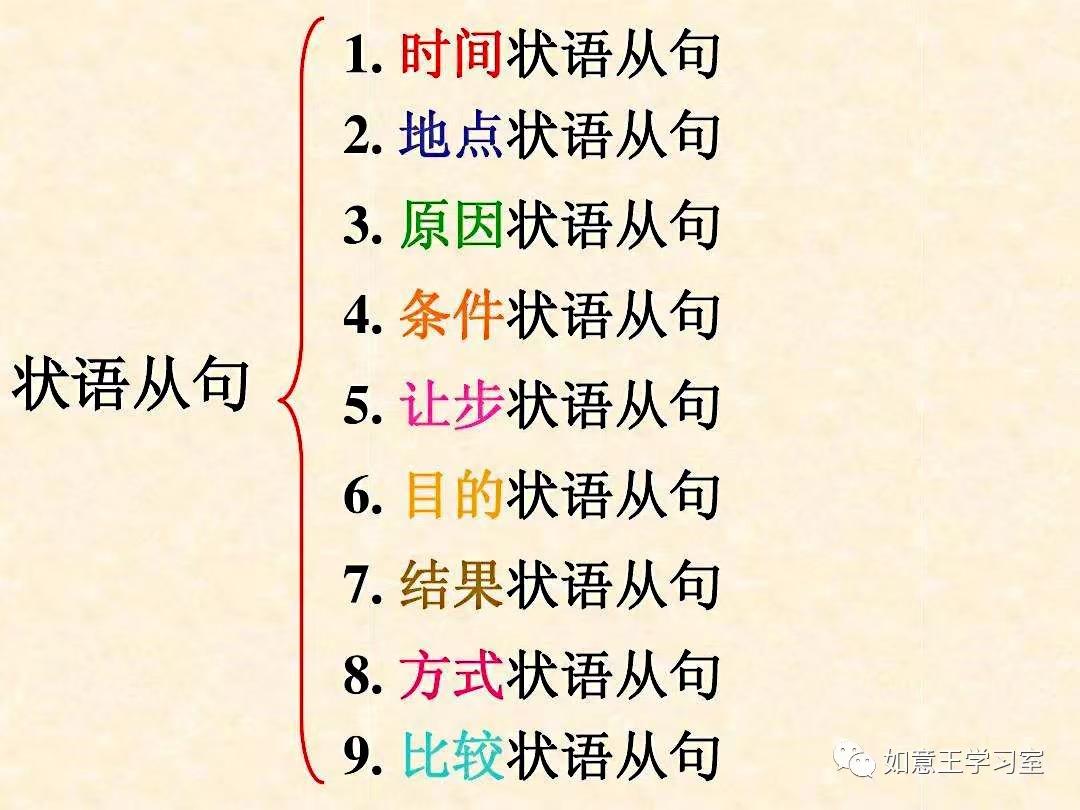100次浏览 发布时间:2024-10-29 10:06:15

时间状语从句是指,在句子中对时间进行说明的副词性从句;
之前我们讲过,副词性从句的句式结构为“引导词/引导词组+陈述句”,时间状语从句的结构也是如此,例如:
We should strike while the iron is hot.

时间状语从句的常见引导词有以下几种:
1)as, when, while
这一类引导词被译为“在……时”或“在……期间”,用来表示主句动作和从句动作同时发生,可使用延续性动词和非延续性动词,例如:
It was raining when I was a child.
这三者有区别但非常小,可以简单理解为三者所连用的动词延续性时间由短到长的排序为as < when < while;
另外,as 可以表示伴随,被译为“一边……一边……”,例如:
The game started as we got there.
2)after, before, since
这三个引导词分别被译为“在……之后”、“在……之前”和“自从……以来”;
其中,当使用 since 时,常会出现以下句式“It be 一段时间 since ……(过去时)”,例如:
It has been many years since I came to Shanghai.
3)not ... until ... , till, until
这类引导词被译为“直到……才”和“直到……时”,在否定句中(not ... until ...),动作在 until 表示的时间才开始,例如:
I did not realize how special my mother was until I became an adult.
在肯定句中,动作则是延续到 till/until 表示的时间结束,例如:
I waited for him until he came back.
时间状语从句的特殊引导词有以下几种:
1)副词型连词
这类引导词看上去是副词,但事实上是连词,例如 directly, immediately, instantly 等;
2)时间类
这类一般是引导词组,包括 each time, every time, the day, the instant, the minute, the moment, the second 等;
3)一……就……
这类引导词包括 as soon as, hardly ... when ..., no sooner ... than ..., scarcely ... when ... 等;

一般情况下,时间状语从句会出现“主将从现”的情况,也就是说从句的动词时态会使用“一般现在时”表示“一般将来时”,使用“现在完成时”表示“将来完成时”,例如:
As soon as I have finished this work, I will have gone home.


美的(Midea)空调客服人工号码(全国统一)400客服热线实时反馈-今-日-资-讯(美的(Midea)空调空调定时开 )
2025-08-25 22:05:53
惠康中央空调全国各市售后热线号码实时反馈-今-日-资-讯(惠康中央空调空调不能制热 )
2025-08-25 22:04:45
欧品(oping)空调维修售后号码24小时丨全国400服务点实时反馈-今-日-汇-总(欧品(oping)空调空调内机尺寸 )
2025-08-25 22:04:43
国祥空调售后维修服务中心(国祥空调空调 h3 )
2025-08-25 22:04:22
RC空调全国维修服务号码实时反馈-今-日-更-新(RC空调空调哪款好 )
2025-08-25 22:03:58
COLMO空调全国维修服务号码实时反馈-今-日-资-讯(COLMO空调空调锁 )
2025-08-25 21:59:08